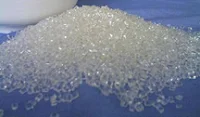Heatset printing ink is made for the offset printing process. It is made specifically to deal with high speeds and a quick drying process that is accomplished by means of a heatset oven. Heatset printing ink however is one of only about six different categories for the offset printing industry. Here are the categories:
- waterless
- ultraviolet (UV)
- electron beam (EB)
- coldset
- heatset
1. Resins
 |
| Thermoplastic resins |
2. Wax
 |
| Parrafin wax |
3. Pigment
These give the ink its color. Heatset inks as well as most offset printing inks tend to use transparent pigments for the sake of utilizing the four color process. Colors are made form what is known as flush pigments. Each pigment must show the color below that it was laid on top of. In the manufacturing step, pigments are made as a powder and then dispersed into the vehicle. Black pigment powder simply comes from carbon black.
4. Vehicle
This is where heatset printing ink departs from other types. While all inks require some sort of vehicle to transport the pigment, the vehicle composition will vary depending on the process. Here is where properties of the ink are determined such as tack, viscosity, water pickup and ink/water balance. Additionally, given the drying process for heatset printing ink, this vehicle is formulated in such a way as to bind the pigment to the paper when it passes through the oven. Solvents are used that meet the desired flash point for the dryer and completely evaporate. This is what makes high speeds with heatset printing possible.
5. Driers
While coldset printing requires help from additives to react with oxygen, heatset printing does not. However some heatset ink manufacturers will drying resins to help ensure that the ink is completely dry at the end of the process.
Click here for more information on troubleshooting offset printing ink.

Comments
Post a Comment